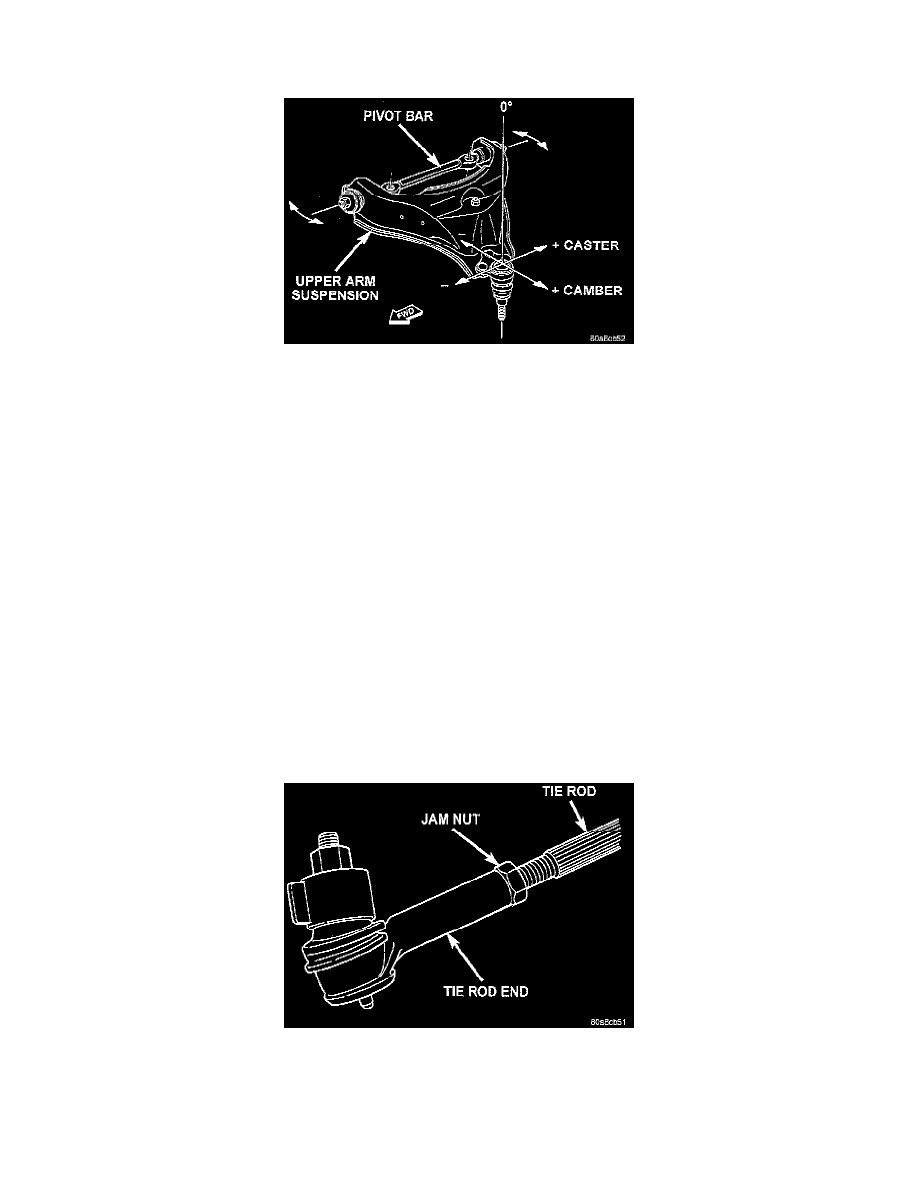Durango 4WD V8-5.9L VIN Z (1998)

Alignment: Service and Repair
Wheel Alignment
CAMBER AND CASTER ADJUSTMENT
Camber and caster angle adjustments involve changing the position of the upper suspension arm pivot bar.
CASTER
Move only the rear position of the pivot bar in or out. This will change the caster angle significantly and camber angle only slightly. To retain the
camber while adjusting caster, move the rear pivot bar in or out. Move the forward pivot very slightly in the opposite direction. The caster angle
should be adjusted as close as possible to the preferred specification.
NOTE: For example, to increase a positive caster angle, move the rear position of the pivot bar inward (toward the engine). Move the front of
pivot bar outward (away from the engine) slightly until the original camber angle is obtained.
CAMBER
Move only the forward position of the pivot bar in or out. This will change the camber angle significantly and caster angle only slightly. The
camber angle should be adjusted as close as possible to the preferred specification. After adjustment is made tighten the pivot bar nuts to proper
torque specification.
TOE ADJUSTMENT
The wheel toe position adjustment should be the final adjustment.
1. Start the engine and turn wheels both ways before straightening the wheels. Secure the steering wheel with the front wheels in the
straight-ahead position.
2. Loosen the tie rod jam nuts.
NOTE: Each front wheel should be adjusted for one-half of the total toe position specification. This will ensure the steering wheel will be
centered when the wheels are positioned straight-ahead.
3. Adjust the wheel toe position by turning the tie rod as necessary.
4. Tighten the tie rod jam nut to 75 Nm (55 ft. lbs.).
5. Verify the specifications.
